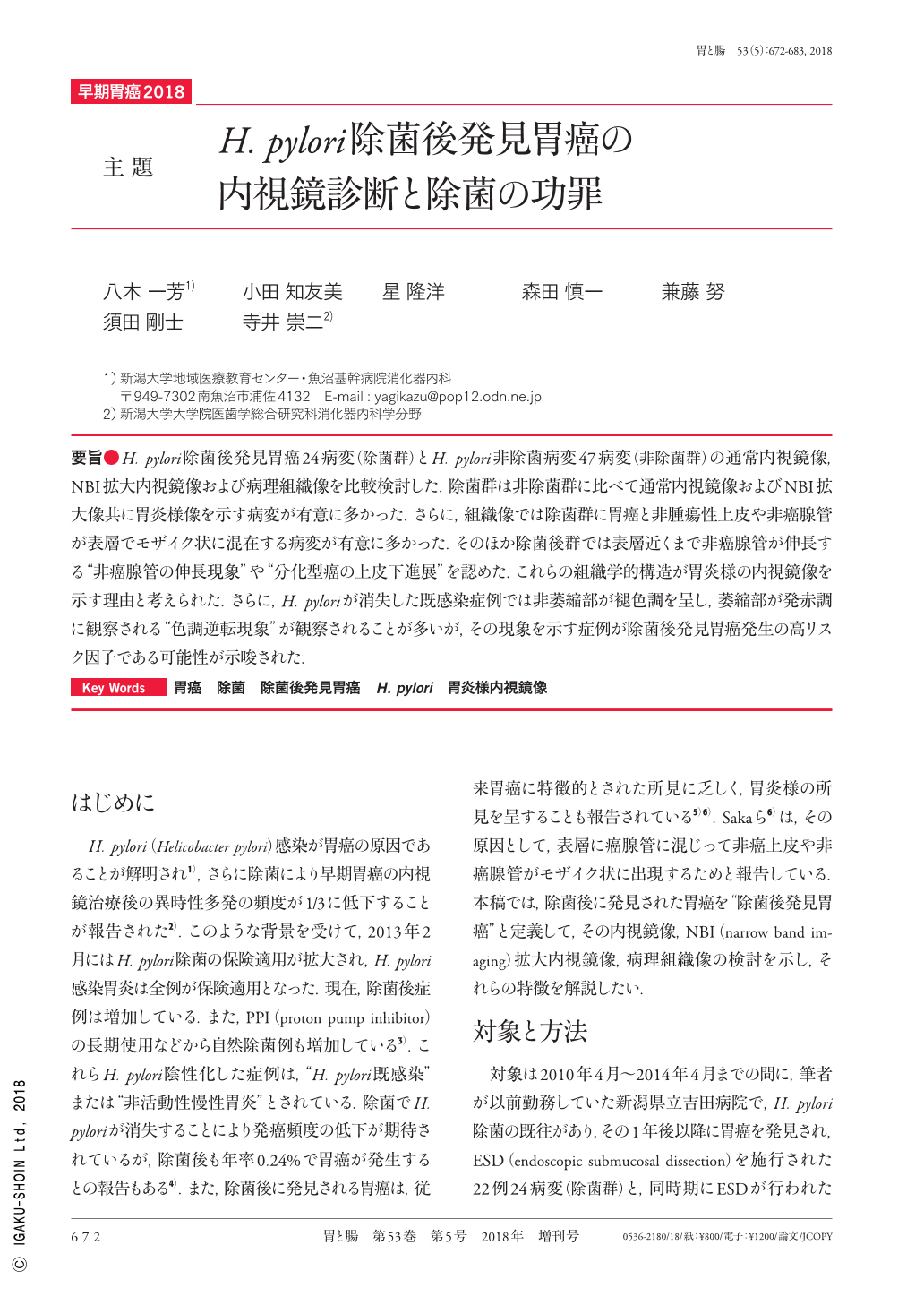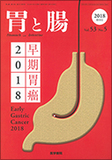Japanese
English
- 有料閲覧
- Abstract 文献概要
- 1ページ目 Look Inside
- 参考文献 Reference
- サイト内被引用 Cited by
要旨●H. pylori除菌後発見胃癌24病変(除菌群)とH. pylori非除菌病変47病変(非除菌群)の通常内視鏡像,NBI拡大内視鏡像および病理組織像を比較検討した.除菌群は非除菌群に比べて通常内視鏡像およびNBI拡大像共に胃炎様像を示す病変が有意に多かった.さらに,組織像では除菌群に胃癌と非腫瘍性上皮や非癌腺管が表層でモザイク状に混在する病変が有意に多かった.そのほか除菌後群では表層近くまで非癌腺管が伸長する“非癌腺管の伸長現象”や“分化型癌の上皮下進展”を認めた.これらの組織学的構造が胃炎様の内視鏡像を示す理由と考えられた.さらに,H. pyloriが消失した既感染症例では非萎縮部が褪色調を呈し,萎縮部が発赤調に観察される“色調逆転現象”が観察されることが多いが,その現象を示す症例が除菌後発見胃癌発生の高リスク因子である可能性が示唆された.
After a successful Helicobacter pylori eradication therapy, gastric cancer is often difficult to diagnose by endoscopy because of its indistinct borderline or the lack of apparent cancer characteristics. We examined the endoscopic findings and histology of patients with gastric cancer who had(eradication group, 24)and had not(non-eradication group, 47)undergone H. pylori eradication therapy. Gastritis-like appearance on conventional endoscopy and NBI-magnifying endoscopy was significantly more frequent in the eradication group. Furthermore, non-neoplastic epithelium appeared to be mixed with cancerous glands in more than 10% of the cancerous areas more frequently in the eradication group. Presumably, gastritis-like finding in the eradication group is because of the appearance of non-neoplastic epithelium mixed with cancerous glands.
We have previously reported a reversal of red and white coloration in the gastric corpus in some patients after eradication and have referred to it as the "reversal phenomenon on the mucosal borderline"(RP), which is often evident in patients who develop gastric cancer after eradication. Therefore, we conducted a cross-sectional study to evaluate the correlation between RP and gastric cancer after H. pylori eradication therapy. We inferred that gastric cancer appeared more frequently in the RP group than the non-RP group.

Copyright © 2018, Igaku-Shoin Ltd. All rights reserved.


